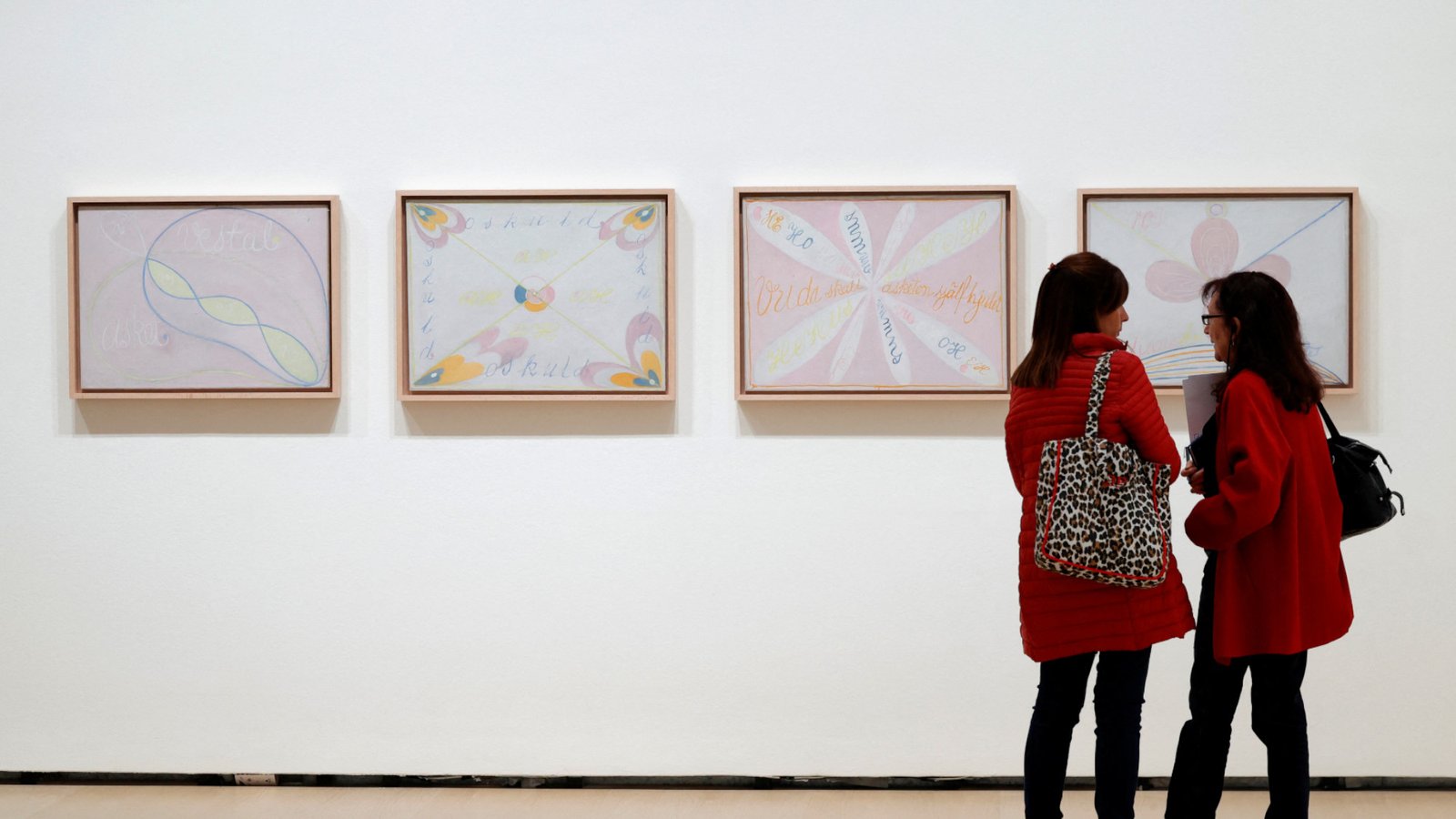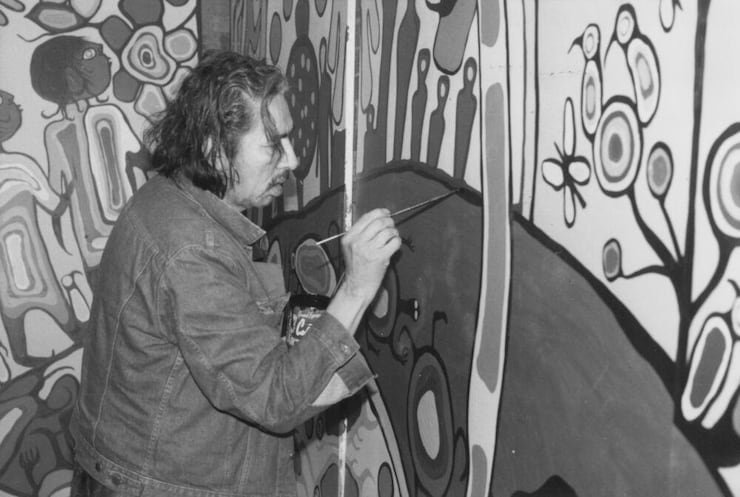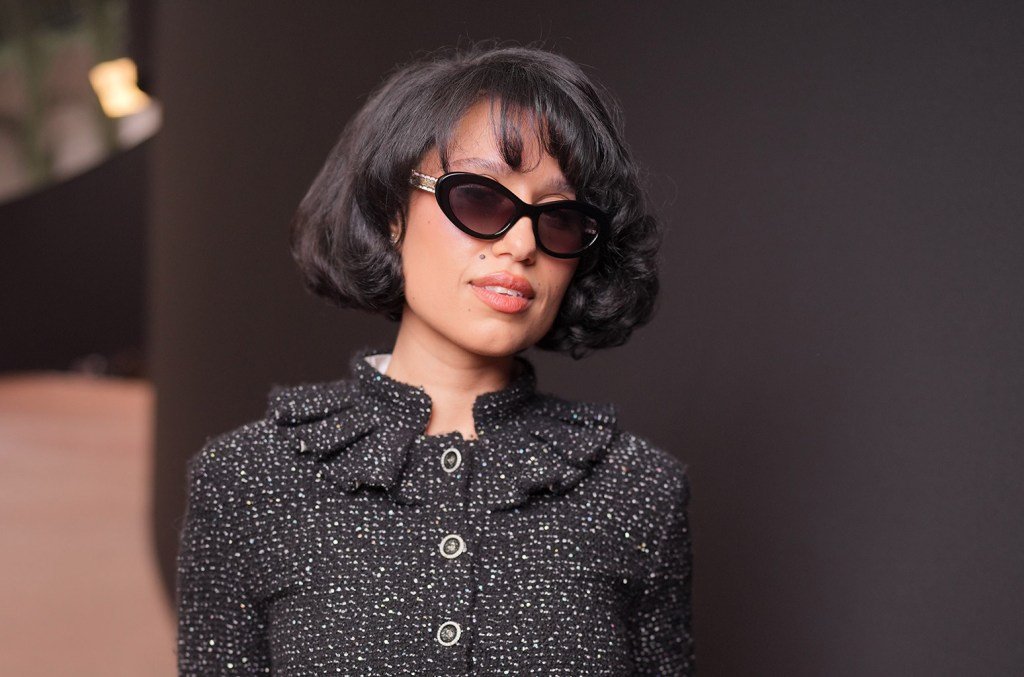When this old world starts getting me down
And people are just too much for me to face
I climb way up to the top of the stairs
And all my cares just drift right into space …
I’ve found a paradise that’s trouble-proof …
Up on the roof
So crooned the Drifters in 1962, making the inner-city rooftop — “tar beach” — a very cool spring-and-summertime place to be. And while the roof of the august Metropolitan Museum of Art may not have figured in anyone’s getaway plan back then, it does now, thanks to the Roof Garden sculptural commissions the museum has been installing, seasonally, over the past dozen years.
The latest of them, “Petrit Halilaj, Abetare,” which opens on Tuesday, is one of the airiest looking so far. Indeed, drawing — or skywriting — rather than sculpture is what I’d call this openwork tangle of dark bronze-and-steel calligraphic lines tracing silhouetted images — of birds, flowers, stars, a giant spider and a fairy tale house — against the panorama of Manhattan beyond and Central Park below.
It’s a funky, sky-reaching fantasia. But Paradise? Uh-uh. The spider looks mean. The house tilts as if melting. And what’s with a scattering of spiky phalluses, and a Soviet hammer-and-sickle emblem, and mysterious words and anagrams — Runik, Kukes, KFOR — with explicitly down-to-earth connections?
And what to make of the fact that all of these images and words were lifted from a single prosaic source. They were found, scratched and doodled on the surfaces of classroom desktops by generations of elementary school kids in the Balkan territories of Europe during a time of brutalizing regional war.
One of those adolescent vandalizers was the artist Petrit Halilaj (pronounced Ha-lee-LYE). He was born in a rural village near the town of Runik in Kosovo in 1986. In 1998, during the Yugoslav wars, when his country was under violent occupation by Serbia and his family home had been torched, he escaped to an Albanian refugee camp called Kukes II, where he remained for more than a year.
There Halilaj met the Italian psychologist Giacomo Poli, who was stationed at the camp to study the effects of war-induced trauma on young people. Poli encouraged him to draw pictures of the atrocities he had witnessed and peaceable scenes from the natural world that brought him comfort. The resulting images were acknowledged by everyone who saw them to be prodigious and Halilaj’s path toward an art career was set.
After returning to Runik for a while, he went to art school in Italy, then settled in Berlin. Since then he has periodically revisited Kosovo, the homeland he still cherishes, and the history and memory of which has been the source of much of his work thus far.
For his breakthrough appearance in the 2008 Berlin Biennale he built a full-scale version of his parents’ destroyed Runik house. Two years later, he excavated more than 60 tons of earth from family-owned land, trucked it to Switzerland, and filled an Art Basel booth with it.
When, on a trip to the Kosovar capital, Pristina, he discovered that the Natural History Museum he had loved as a child was being repurposed as an ethnological museum, with much of its original collection left to molder in storage, he rescued original taxidermic specimens and incorporated them into his art.
And when, on a trip to Runik in 2010, he learned that his former elementary school was about to be emptied and demolished, he salvaged some of the old desks. He then painstakingly recorded, in sketches and photographs, examples of the graffiti that covered their surfaces, a layered record of the fears, desires, political impulses and pop cultural enthusiasms of generations of Kosovar youth.
Some of these images became the linear steel sculptures that made up the first versions of the ensemble called “Abetare,” which was the name of an illustrated alphabetic primer, written in the Albanian language that he had learned from as a child.
For the Met version of the show, which spreads across the Roof Garden, attached to walls and tucked into corners, he expanded the geographic reach of his material, tracking down and documenting desktop scratchings and doodles from the other Balkan countries — Albania, North Macedonia, Montenegro — that had experienced Serbian aggression after the breakup of the former Yugoslavia. And it’s this expanded image archive that forms the basis of the Met installation, organized by Iria Candela, the museum’s curator of Latin American art.
At the center of the ensemble, sketched in bronze and steel piping, is the tall, skeletal peak-roofed house. Halilaj found the image on a desk in his Runik primary school but it could also stand for his long-gone childhood home, or a refugee camp tent. And he personalizes it with the addition of other, smaller graffiti-derived images, some human, as in a stick figure of a child; some nature-based (a star, a snake); still others, including a couple of sculptural scribbles, inscrutable.
Rising — looming — behind the house is a second large sculpture. I took it at first to be a spindle-rayed sun; in fact, it’s the form of a mammoth spider, based on a doodle Halilaj archived at a school in North Macedonia. With its smiling/smirking face, it’s expressively hard to read, good-humored or malevolent depending on what you’re prepared to see. And for Halilaj it evoked an ambivalent-feeling art-world icon: the colossal late arachnid sculptures by Louise Bourgeois — each looking predatory and protective, all complicatedly titled “Maman” — “Mother.”
As with Bourgeois, childhood innocence and adult experience are closely bound in Halilaj’s art. And in “Abetare,” the spirit of an in-between state, adolescence, prevails. In an installation that has the hide-and-seek tease of a treasure hunt you find crude erotic cartoons and a NATO logo, pop song quotes and military acronyms; an image of the dove of peace (perched on one of the spider’s legs) and one of Batman — in short, a lexicon of heavy-light cultural references familiar to most kids who entered their teens where and when Halilaj did.
It was a fearful time, as ours is. The Yugoslav wars of the 1990s are often considered to have added up, collectively, to the deadliest conflict in Europe between World War II and the present Russian war on Ukraine. To a refugee child in the Balkans during that violent decade the ability to invent an alternative world meant everything.
And that’s what art seems to have done for Halilaj. It gave him a controllable frame through which to view the wide world with its confounding terrors and beauties, and a high-up, open-sky imaginative space that was far from trouble-proof, but where it was safe to dream and play.
The Roof Garden Commission: Petrit Halilaj, Abetare
April 30 — Oct. 27, Metropolitan Museum of Art, 1000 Fifth Avenue; (212) 535-7710, metmuseum.org.






